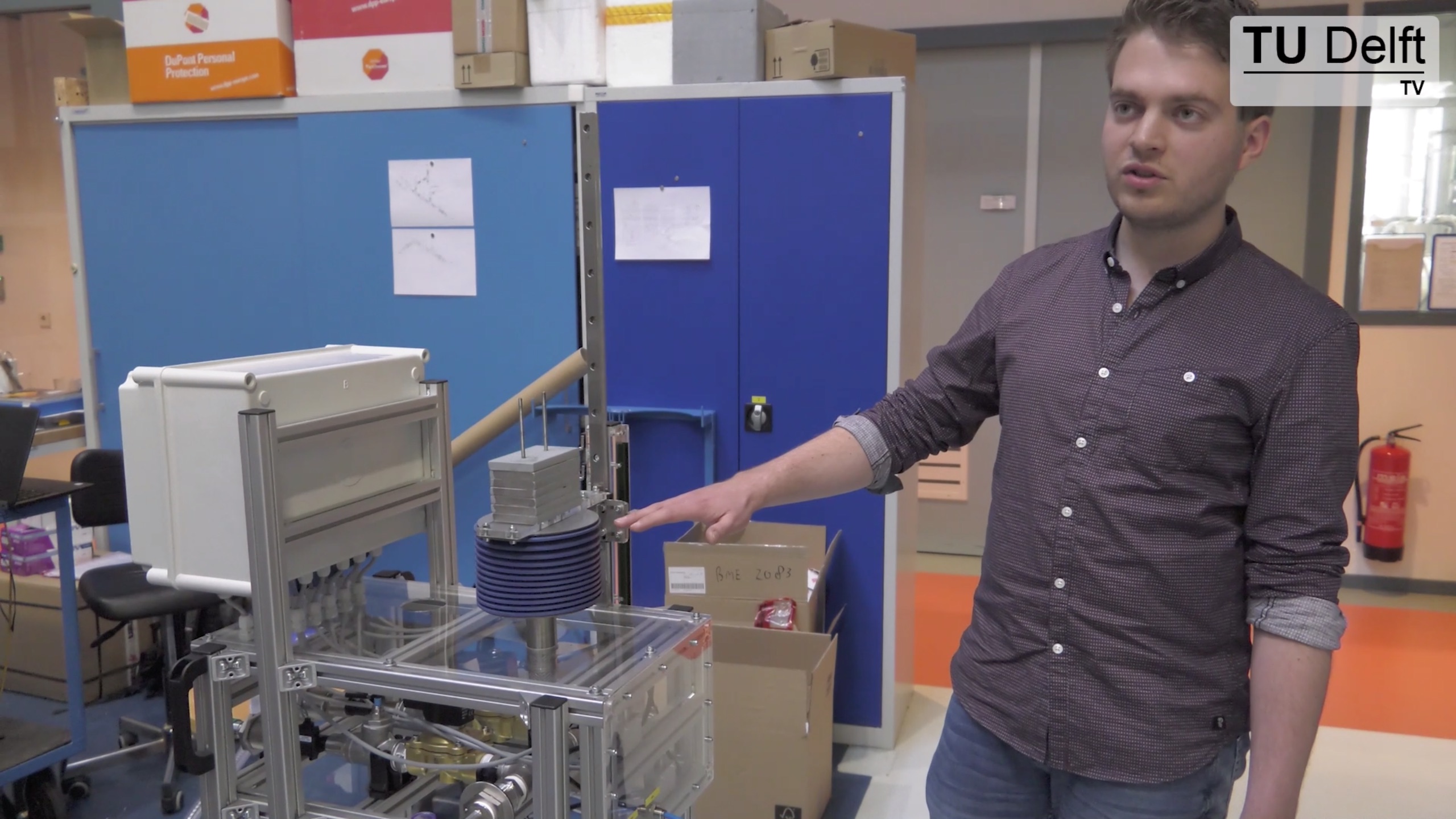TU-employees led by Professor Amir Zadpoor (3mE) have designed and built a ventilator made from standard industrial parts: reliable and widely obtainable.
Teunis van Manen explains the ventilator. (Still from TU Delft TV)
In the workshop, there is a sound of fast breathing. Pff, pff, pff. The sound comes from a bellow that is being tested for durability. A counter shows over a half million compressions. Other parts, like valves and sensors, have a specified reliability. “These are components that are used all over the world in process automation”, says Professor Amir Zadpoor. “They come with guaranteed reliability, and they can be bought all over the industrialised world.”
The article continues below the video.
Besides reliable parts, Zadpoor also chose for redundancy in the design. “Redundancy means that you can perform the same task in different ways”, he explains. So if you can’t get oxygen sensors, because they are suddenly sold out, you first fill the bellows for the required part with pure oxygen, and subsequently replenish the volume with air. A linear sensor on the bellows allows you to do so. “As soon as oxygen sensors, or mass flow sensors, become available again you can just build them in to make the machine more accurate.”
The valves for letting gasses in and out are controlled by an industrial process computer. The software, including the touch-screen interface, was made from home by PhD student Mauricio Cruz Saldivar.
Zadpoor estimates the material costs of the ventilator on about 3,000 Euros. As soon as the documentation is finished, the design will be published open-access through the TU Delft repository.
Do you have a question or comment about this article?
j.w.wassink@tudelft.nl


Comments are closed.